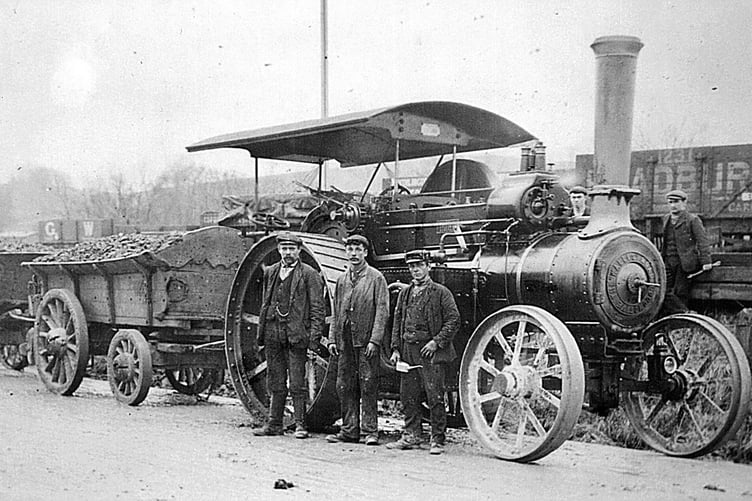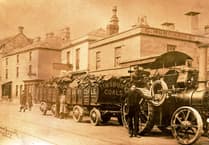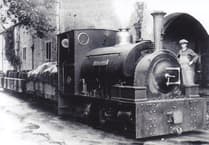Last week, some more historical transport was featured in our Mystery Photograph! Well done to everyone who guessed correctly. The photo featured a traction engine at Radstock’s Great Western Railway station.
A traction engine is a steam-powered tractor. Commonly used throughout history for threshing corn, sawing wood, crushing stone, haulage and many more varied tasks, these vehicles were hailed the “all-rounders of the steam world”. The one featured in this picture appears to be pulling quarried stone.
Development of the traction engine started in the mid-18th century. Traction engines originally required horsepower to steer. From 1869, the vehicle no longer required horses for steering, gears were also added as mechanics for the traction engine evolved.
Thank you to Radstock Museum for supplying this photograph.

Well done to Les Box, Hannah Selway, Roy Barnes and Val Rogers who guessed Radstock correctly.
Andrew Light also guessed correctly, and provided some interesting information about the origins of this photo. He said, “I believe this week’s mystery photograph was taken in the mid 1920s at the Radstock railway sidings.
“The man on the left of the photograph is my grandfather, Bertram Jame; he worked for S C Gilson and Sons who owned the Cook's Wood Quarry in Holcombe. He drove the traction engine hauling stone from the quarry to Radstock so that the stone could be loaded onto the trains.”
Cook’s Wood Quarry opened in 1906, producing limestone. Occasionally, sandstone was also extracted from this quarry. By the 1940s, it was producing 30,000 tons of lime per annum. The quarry was operated for most of its years by S C Gilson and Sons until 1958. The quarry closed in 1993.
Do you know where we are in this week’s Mystery Photograph? We would love to hear from you.
If you have a historical image of our area suitable for our Mystery Photograph feature, please email: [email protected]





Comments
This article has no comments yet. Be the first to leave a comment.